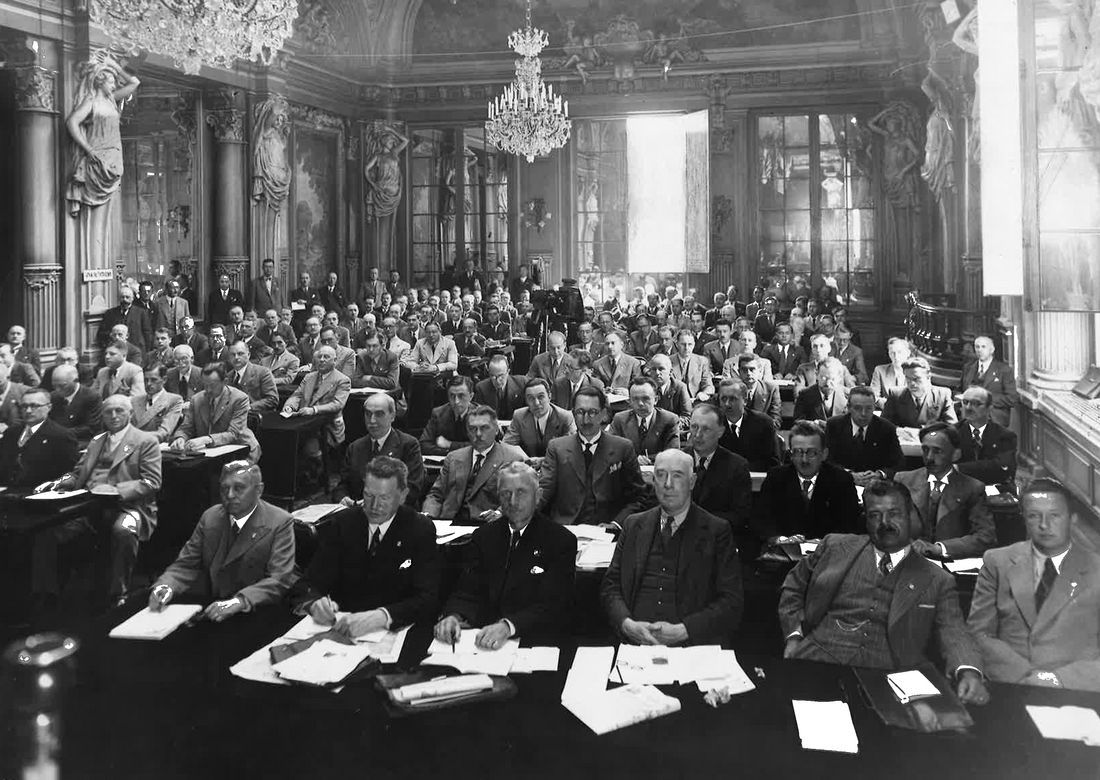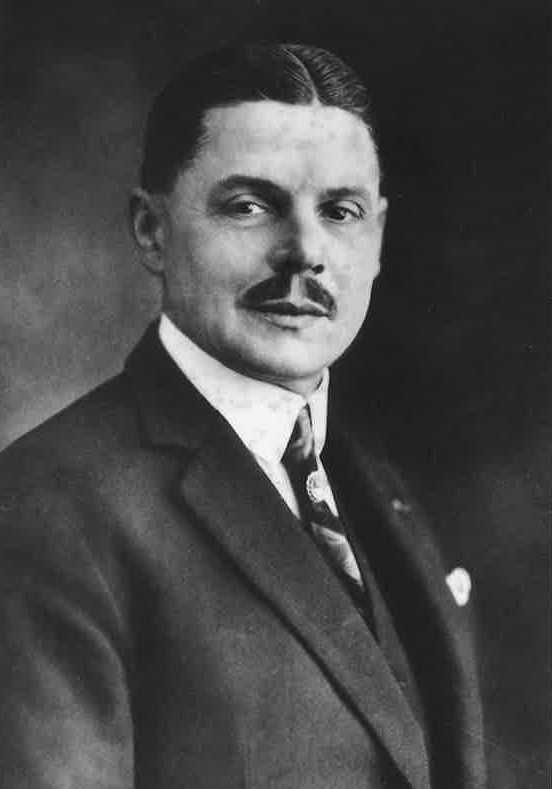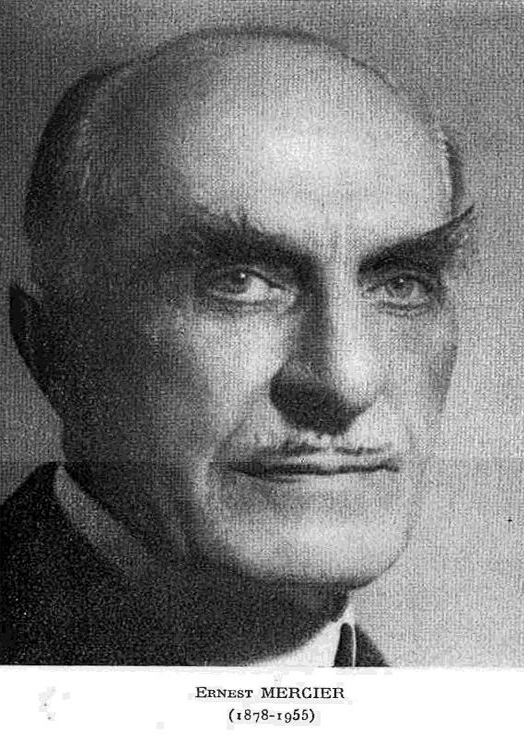The Inter-war years

After the first CIGRE meeting in 1921, attended by 231 delegates from ten European countries as well as the United States and Japan, CIGRE’s second Session was November 26 to December 1,1923, with 394 participants from 20 countries – a number that confirmed the success of the first Session. Every two years the participation increased. The third session in 1925 (moved to the summer) hosted 530 participants from 27 countries, and the 1927 Session had a total of 544 Members from 28 countries. During this session, it was decided to ‘keep CIGRE’s head office and the permanent Secretariat in Paris and to hold all its future meetings in this city’.
By 1929, the fifth Session showed a major increase in numbers, with 703 participants and it became apparent that a permanent structure was necessary. In 1931, the Conference became an independent organization and that same year, the sixth biennial Session attracted 738 delegates from 36 countries; three times more participants than the first event.

CIGRE 1931 Session – Salle Hoche, Paris
During the sixth Session in 1931 it was voted that an international association would be legally founded under the French Law dated July 1, 1901, which defines the rules governing non-profit, non-governmental associations or societies. The thirteen official co-founders, and the first permanent members, were all participants from the early stages: Messrs. Bakker, Barbagelata, Bauer, Brock, Drewnowski, Duquesne, List, Norberg-Schulz, Perrochet, Tribot-Laspière, Ulrich, Wilczek and Woodhouse.

Marcel Ulrich (France), who had chaired the two preceding was unanimously elected CIGRE’s President, a position he held until his sudden death in August 1933.
The Statutes of the Association adopted in 1931 corresponded well to an association of persons (individual persons and corporate/legal entities) and not to a federation of national groupings, and even less to a federation of countries. Therefore all political questions were excluded, and all members represented only themselves individually. They acted and took part in discussion meetings with total independence and in total freedom. Only their competence and their expertise were required. By definition, the Association was sovereignly directed by the General Assembly of all its Members, which was to meet every two years, and delegated its powers to an Administrative Council, which performed its tasks through its President and its Delegate General.
The initial statutes remained practically the same up until the 1960s except for two significant changes:
- In 1939, CIGRE was termed a ‘foreign’ association by decree because more than a quarter of the members were non-French;
- The other modification, in 1948, concerned the categories of association members. ‘Ordinary’ membership was dropped, leaving ‘personal’ (individuals), and ‘collective’ (associations, public administration bodies and other institutions and public and corporate bodies).
CIGRE’s confirmed success
In 1933 French industrialist Ernest Mercier, Head of the Union d’Electricité corporation and the man behind the French very high voltage system develop, was elected to succeed to Marcel Ulrich as CIGRE’s President.
For 14 years, he guided the CIGRE community, developed and expanded a powerful international relations network, and strengthened the resolutely supranational CIGRE “esprit de corps” or team spirit; a CIGRE spirit which was subjected to a serious economic crisis and increase in international tensions leading up to World War II.

Despite difficult negotiations concerning German being recognized as the third official language, Germany and Austria were permitted to join the Association in 1932; as defeated powers in the Great War, they had been previously excluded from CIGRE membership.
The 1935 and 1937 Sessions participation showed, respectively, 834 and 871 participants from all five continents. The number of reports – 176 in 1935 – reflected how much their authors valued CIGRE.
The Creation of ELECTRA
On June 15,1931, on the eve of CIGRE’s 6th Session, the first issue of Electra was published. Planned for three years but sidelined by an overwhelmed central office staff, the publication coincided with the 10th anniversary celebration of the Conference’s foundation, an important date in the history of international relations in electrical engineering.
The vision for Electra was presented as a monthly journal devoted to the study of the generation, transmission, and the transformation of electrical energy.
The aims of Electra were, and continue to be:
- To secure the interconnection between conference member, who are scattered all over the world, and to receive monthly news from the Conference, their colleagues, and their friends.
- To spread the work of permanent studying committees between two consecutive sessions.
However, Electra’s circulation aimed at a readership beyond the CIGRE community itself, widening CIGRE’s international dynamic by making maximum use of the lever of bilingualism:
“In addition, Electra will endeavour to secure, with the help of its hundreds of informants and friends, the most striking studies or reports; and in fact, everywhere one finds number of indefatigable searchers and clever minds who, during their slow laboratory task or their daily practice of networks or factories have come across an idea or invention which has caused a sudden improvement in the technical line,” stated CIGRE president, Marcel Ulrich.
“Such men are found but the diffusion of their ideas can be rapid only if these ideas are published in world-spoken language… Therefore Electra will be honoured to translate into French and English the most important studies that will be published in one of these little-used languages, and to thereby open them very rapidly to the public opinion of the technical community.”
The pacifist vision of the international role of electrification and of its systems as factors of peace and progress clearly inspired the President’s conclusion:
“Lastly, the International Conference on Large Electric Systems does not forget that it is one of the greatest and most active international organizations as it is fully conscious of the many duties which it has to fulfill in view of the intellectual and technical closer connection of nations.
Therefore, the Review will publish whenever authorized and when possible, information about the works of other international associations, in order to cooperate in the necessary intercourse between all men of goodwill who fill the same profession and whose principal wish is to know, in the Electrotechnic line, all that is under preparation and discussion throughout the world.”
Unfortunately, the ambitious Electra publication programme was short-lived. It lost momentum, and it did not go beyond issue No. 16 in 1934. Members had to wait until 1948 – after World War II – for the resumption of a second series of Electra; one which has continued without interruption until the present day.
It is important to note as we head into our Centennial year that Electra has kept up with modern technology and has, despite the delay by a year of the 2020 session, joined the realm of digital technology!
Next edition: the development of international Study Committees

